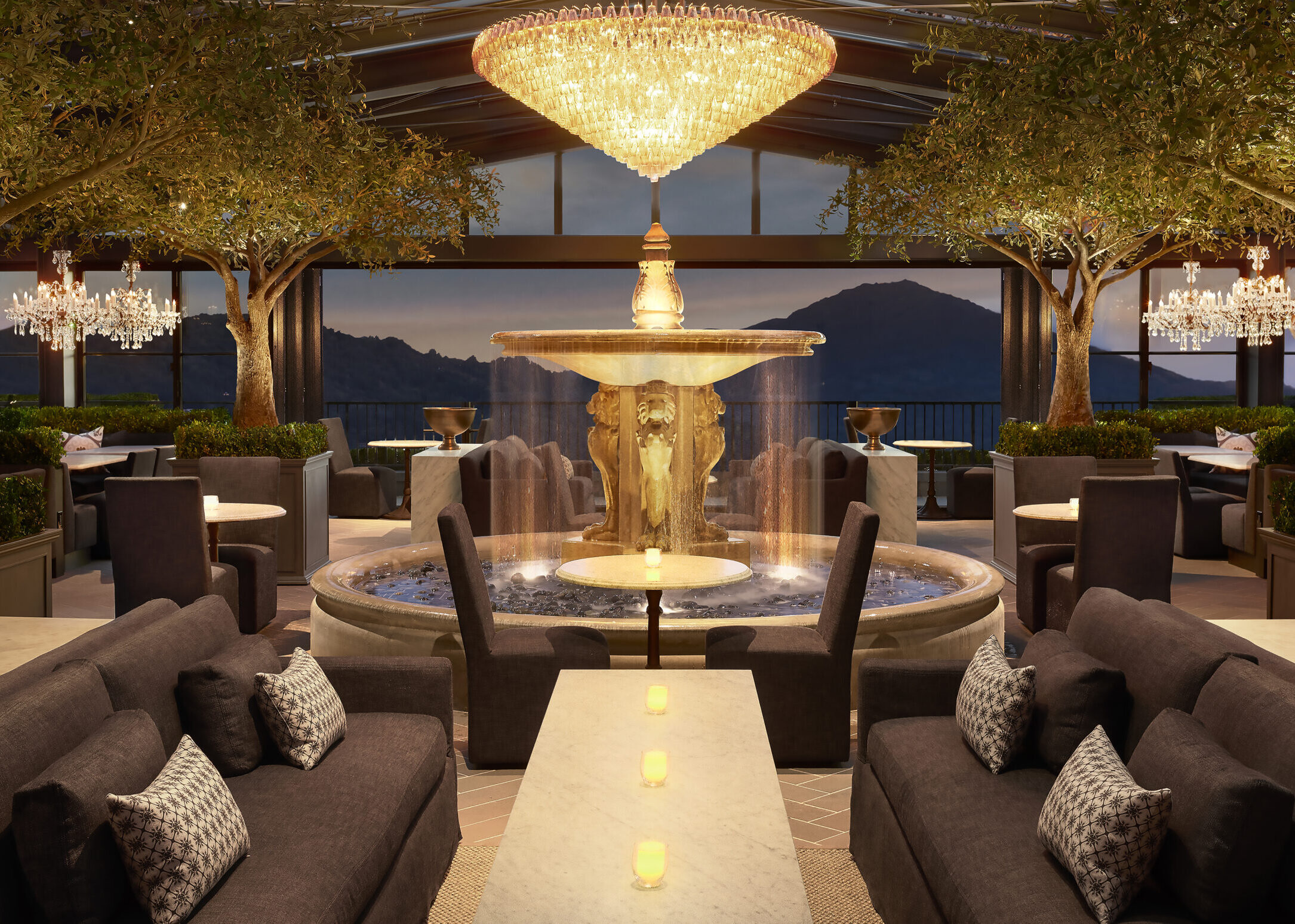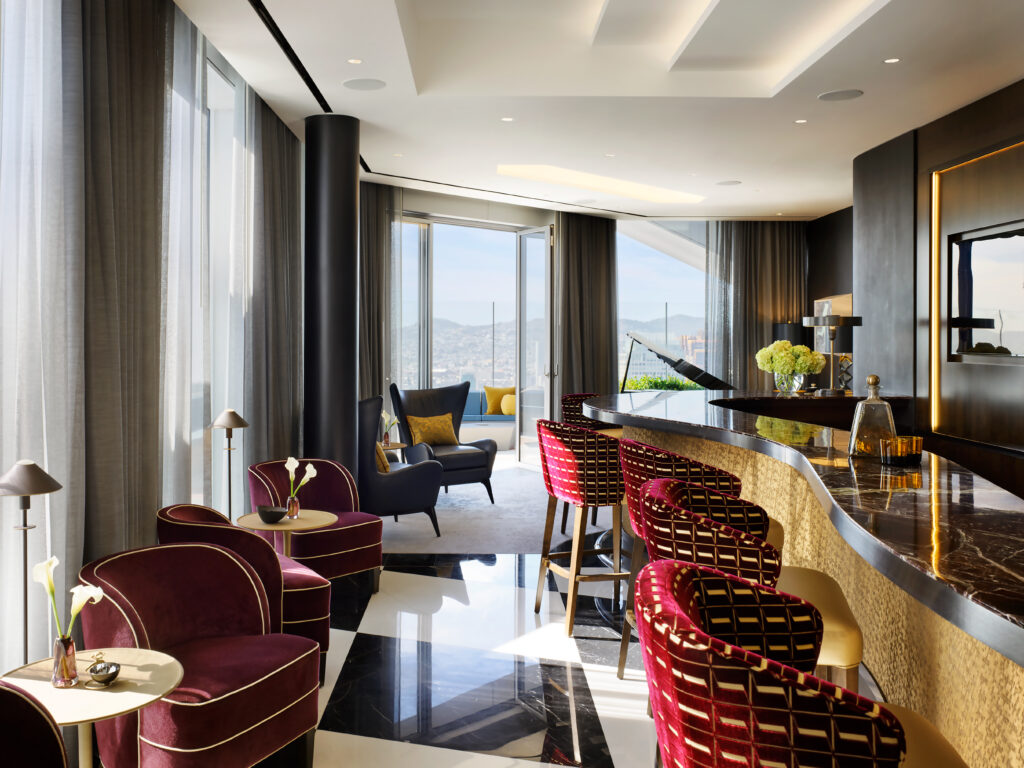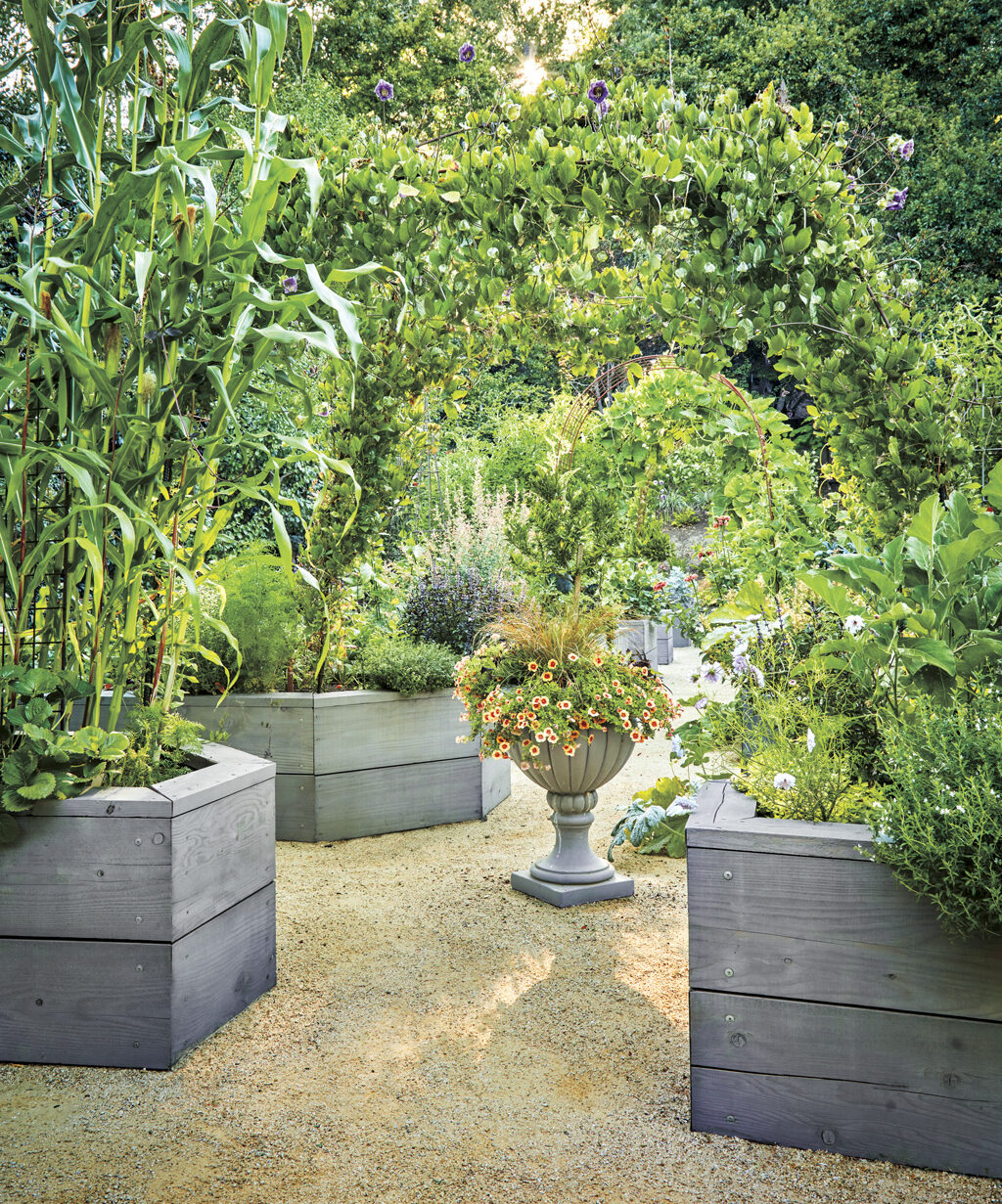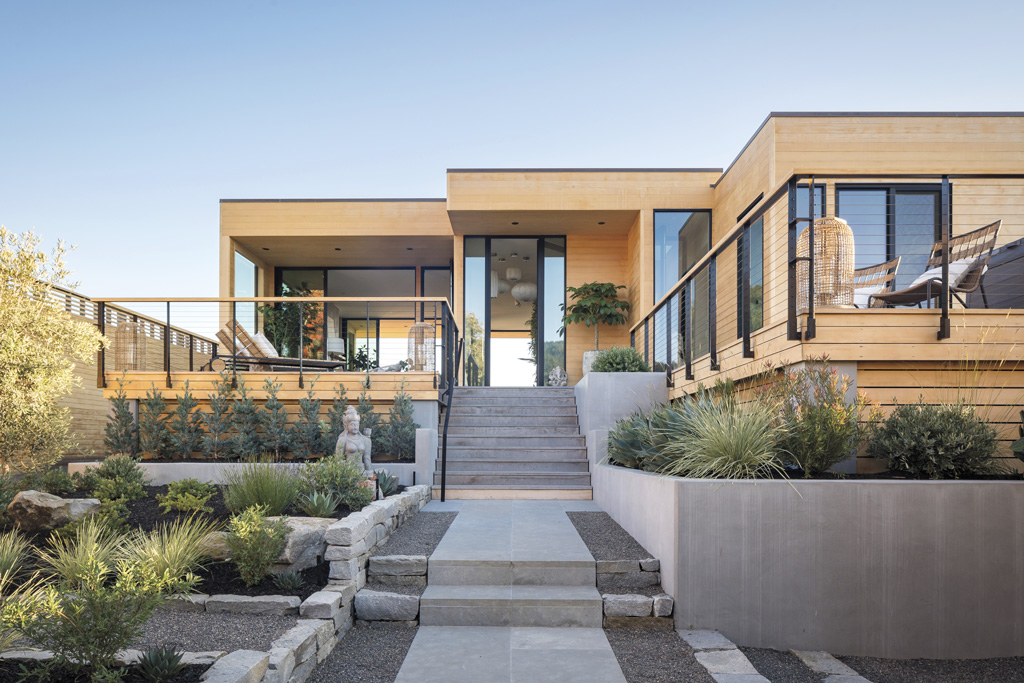Real Estate
The Bay Area Is Where Innovative Design Comes to Live
 Restaurant space at RH Marin (photo courtesy of RH Marin)
Restaurant space at RH Marin (photo courtesy of RH Marin)Restaurant at RH Marin
Normally, dining at a shopping destination like the Village at Corte Madera is a fun act of convenience, not something you would consider for date night. But with July’s opening of the spectacular RH Marin (the gallery is currently open, the restaurant closed until it is safe to reopen) featuring three levels and 60,000 square feet of artistic luxury home installations in a gallery setting, an interactive interior design studio and, of course, a rooftop restaurant, that all changes. But this is no ordinary restaurant. The space sits atop a double floating staircase and seamlessly blends inside and out as it opens onto a landscaped park featuring unobstructed views of Mount Tamalpais to the west and San Francisco Bay and its wetlands to the east. Influenced by the classical gardens of Europe, the outdoor area features intimate RH Outdoor lounge spaces covered by an atrium with retractable glass walls, the mood enhanced by crystal chandeliers, heritage olive trees, sculptural evergreens and the sound of trickling fountains. And yes, there is also a climate-controlled wine bar off the grand staircase featuring champagne selections from around the world and wine from Napa Valley small vintners. “We’re not the first ones to put a restaurant in a retail store, but we are the first to seamlessly integrate one into a retail experience,” says RH Chairman and CEO Gary Friedman. “What we’ve created here is an inspiring and immersive experience that blurs the lines between residential and retail, indoors and outdoors, home and hospitality.”

Aperture Estate
Founded by father-son duo Andy Katz, a world-renowned photographer, and Jesse Katz, a winemaker, Healdsburg’s Aperture Estate has been a family affair from its conception. “We had two goals for the winery: to ground it in the context of the Sonoma Valley and to represent the unique perspective of this collaboration,” says Juancarlos Fernandez of Signum Architecture. Based on the octagonal shape of a camera’s aperture, Fernandez and his team “deconstructed the aperture into eight elements, manipulating and reassembling them into four connected structures that became the winery production building. The eight sides of the aperture form the building’s eight rooflines.” Dramatic angles, clean lines and the use of natural light define the estate’s buildings, and the interior design follows suit: “The geometric feature seen in the main tasting room skylight inspired the rug shape and open-furniture plan as if to radiate the furniture from its epicenter,” adds designer Hayley Palmer. “Blackened steel, warm bronze and light woods along with a natural palette and soft fabrics bring a richness to the space.” The hospitality building’s glass walls and sweeping outdoor spaces offer guests breathtaking views of the Sonoma Mountains and surrounding area, but the gallery space, which showcases Andy’s photos, is what provides the historic framework for the wine. “I was inspired to become a winemaker after traveling to some of the world’s top wineries as a teenager with my father,” says Jesse. “We take a similar approach to making wine that my father does with his photos — let the beauty and quality of the source materials speak for themselves, with very little manipulation or processing.”

181 Fremont
It is no secret that San Francisco’s skyline has changed quite a bit over the last 10 years. But only one building in that lineup can lay claim to being the West Coast’s tallest mixed-use tower, and with the recently-launched grand penthouse, it also boasts the tallest residence west of Chicago sitting on top. That South of Market high-rise, with its distinctive sawtooth pattern exoskeleton designed by Heller Manus Architects and its LEED Platinum certification, is none other than the award-winning 181 Fremont. “As the building utilizes the exoskeletal system for internal stability, it is able to create open floor plates without interior columns between the facade and the core,” says Jeffrey Heller, the founding principal of Heller Manus Architects. “Since a triangle is the strongest shape in nature and is the basic building block of the design, it expresses the building’s strength.” The tower is also notable for its earthquake safety and green design features, including 42 of the deepest construction caissons ever drilled in San Francisco, anchored to bedrock; a system that captures, treats and reuses graywater and rainwater; and a unique glass curtain wall system that maximizes natural light. But you can be sure residents are most interested in the luxury interiors of their spaces, which begin at 500 feet above the ground, design by internationally renowned ODADA. “The views are obviously phenomenal from this tower and keeping the detailing clean and minimal was not easy nor inexpensive but was well worth it,” says David Oldroyd, principal and owner of ODADA. “The quiet understatement of the finishes reinforces the great care the team took to create this amazing residence.”









